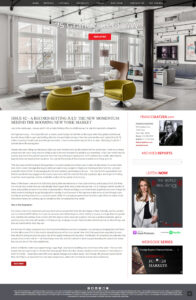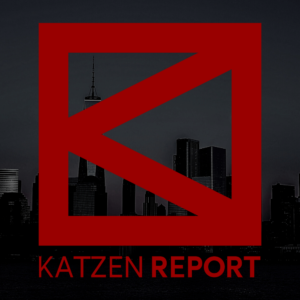Just a few weeks ago, I was up until 11:30 at night fielding offers in a bidding war. For July, it’s practically unheard of.
Don’t get me wrong — it’s a beautiful unit: a classic seven facing Central Park on the Upper West Side, gilded architectural favorite Emory Roth in a pre-war building with lots of superb light coming in from the east and the west. I priced it at $5.75 million, knowing it would need an entire gut renovation. It was on the market only for 60 or so days. Ultimately, it sold for 7 percent above the asking price.
People have been telling me that buyers right now want finished units, but this doesn’t tell the whole story. There are so many people now who want value, and are willing to put in the work because the upside is so compelling. In fact, last month was the busiest July ever in the past ten years for New York City, with buyers signing over 1,275 contracts in a month, when they’ve typically been out enjoying their vacations. You can bet that plenty of those houses needed some fixing up to do.
This also says something about the big picture. If so many people are willing to put in years of renovations for a new home here, that’s a clear message that buyers don’t just want to buy a property. People are investing in New York City. Last year — especially when COVID-19 was ravaging the city and residents were leaving in droves — this was far from guaranteed. Now that this pandemic has dragged on for nearly a year and a half, it’s clear that this city is going to dig in and regain its footing more than most expected, and the residential market still has plenty of room to go.
Many of the buyers I see are from California, buying their second home, or from Latin America, and buying a third. One thing I’ve noticed now is that there are considerably fewer buyers from Asia, in part because the U.S. is issuing a smaller number of visas, and possibly because of the state of global politics. People are happy to purchase these properties now, even though the Delta variant is starting to surge throughout the country, in part because of the experience that we’ve all lived through since last March, and they know this is a cyclical market. While I’m not going to predict how the Delta could affect the future of the real estate market, it’s a strong sign of confidence that I’m seeing from my clients.
Why is this happening?
Eric Adams’ win in the Democratic primary, which all but assured him to be the next Mayor of New York City, can’t be counted out. As a former NYPD officer, he is seen as someone who will be tough on crime. Safety, of course, is a huge driver for growth here, and that will continue to be a factor after the spike in crime since last summer. He’s also a political moderate, open to working across the aisle, with quality of life being a top campaign concern. Sophisticated clientele pick up on these things, and they are comforted by what they see.
But that isn’t all. Major employers here, like financial institutions and tech companies, are planning on bringing their staff back into the office, even if it’s a few months delayed because of the virus variant. New York City’s population expanded by more than 600,000 during the past ten years, one of the largest increases for big cities. The lifestyle, the amenities, the networks that people come to New York for — all these things never left, and will continue to attract people investing the capital that makes this city still one of THE main global hubs.
Before COVID, the market was experiencing a sugar high. Just about everything was in the favor of the seller. There are still buyers who are eager to get in. It’s true that many people fled to the New Jersey suburbs or went upstate, or Connecticut, or down to Florida — areas that could offer more square footage and outdoor space. Now, though, the price per square foot in New York City] is up 8 percent from last year’s project lows, which tells me that the market here is tightening.
Of course, it isn’t just one thing that’s driving this market, but it’s as near to a Goldilocks scenario as you can get. Interest rates near zero mean that buyers are upgrading their home, adding bedrooms and outdoor spaces, and ending up with smaller monthly payments. Inflation, while higher than it was a year ago, isn’t out of control.
Democrats are also planning on lifting, or changing the $10,000 cap state and local tax, or SALT, deduction, which limits how much in property taxes homeowners can write off from their federal bill. This has been a burden on new homebuyers in high tax states like New York. But Congress appears to be easing the cap, or lifting it altogether. The SALT deduction cap has been a meaningful factor in the real estate market, especially for first-time buyers, since it passed in 2017. If Congress can manage to ease this burden, even if it’s by another $10,000, it would be a real incentive that I could see boosting the market.
At the end of the day, New York real estate is reflecting the overall rebound in the country’s economy, and the confidence I see from buyers, as well as the current and proposed policies from lawmakers, could supercharge that growth.
Delta, and other variants, may be looming on the horizon. Though their effect may be unpredictable, our response doesn’t have to be. We are choosing to live in a world with some semblance of normalcy in such a strange time.

